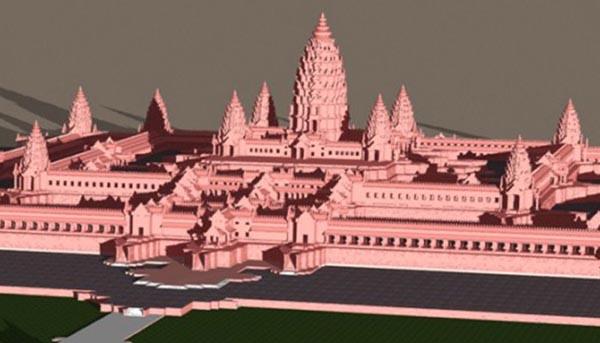Viraat Ramayan Temple

Information of Viraat Ramayan Temple, Champaran, Bihar
The Viraat Ramayan Temple is a 21st century religious monument presently undergoing construction. It is located in Kesaria in the district of Champaran in the Indian state of Bihar. The Mahavir Mandir Trust of Bihar has undertaken the project with a budget of 500 crores. The temple is situated at a distance of 120 kilometres from Patna the capital of Bihar. It is also 60 kilometres from the holy city of Vaishali.
Viraat Ramayan Temple Religious Significance
The Viraat Ramayan temple once completes will be the largest religious temple in the world. It is built as a temple for the Hindus but people from all religions and sects will be allowed to visit the temple. Bihar is a famous religious spot where people go for pilgrimage and once the temple is completed it will attract millions of people.
It is dedicated to the Hindu God Rama and his consort Goddess Sita but will also consist of other Hindu Gods and Goddesses.
Viraat Ramayan Temple History
The plan for the construction of the Temple began in 2012 with presents features similar to the world's largest religious monument Angkor Wat in Cambodia which was built in the 12th century. The name of the temple was originally prescribed as Angkor Wat Ram Temple because it was supposed to be built as an exact replica of the Angkor Wat temple. After various disagreements the named was changed to Viraat Ramayan Temple. The plan of the temple construction was headed by Acharya Kishore Kunal who is a Sanskrit scholar and a retired IPS officer from Bihar. He is presently the secretary of Mahavir Temple Trust of Patna. The final model of the temple was inaugurated by the Chief Minister of Bihar, Nitish Kumar on 13th November, 2013. The temple was supposed to be built in another city in Bihar known as the Hajipur but to the unavailability of such a huge area of 161 acres of Land the construction site was shifted to Kesaria in East Champara. Hajipur is considered as the twin city of Patna.
Viraat Ramayan Temple Architectural Significance
The Viraat Ramayan temple is built in a typical temple like architecture with features taken from the Angkor Wat of Cambodia, the Meenakshi Temple and the Rameshwaram Temple in India. The area on which the temple is built spreads over 200 acres. It will be double the height of Angkor Wat of Cambodia which stands at a height of 215 feet and is the largest religious structure in the world. The temple will be constructed with a length of 2600 feet, at a width of 1400 feet and at a height of 405 feet.
The temple plan consists of a large Gopuram and similar smaller Gopurams surrounding the main shrine which is a distinct feature seen in Temples of South India. A total of eighteen shrines are going to be constructed housing different Hindu Gods and Avatars. The temple of Lord Shiva will consist of the largest Shivalinga in the world and will be placed in such a way that it will not be difficult for the devotees to offer water or milk. All the shrines will be surrounded with walls with small pillar like decoration at the top. A hall will be built inside the temple complex with a capacity to hold 20,000 people. This hall will consist of the main sanctum sanctorum with the idols of Rama, Sita, Lava, Kusa and Valmiki at a height of 66 feet. The interior structure of the temple will be built in different levels and the stories of the Ramayana will be presented in projectors.
- Andhra Pradesh Temples
- Assam Temples
- Bihar Temples
- New Delhi Temples
- Goa Temples
- Gujarat Temples
- Jammu and Kashmir Temples
- Karnataka Temples
- Kerala Temples
- Madhya Pradesh Temples
- Maharashtra Temples
- Odisha Temples
- Punjab Temples
- Rajasthan Temples
- Sikkim Temples
- Tamil Nadu Temples
- Telangana Temples
- Uttar Pradesh Temples
- Uttarakhand Temples
- West Bengal Temples